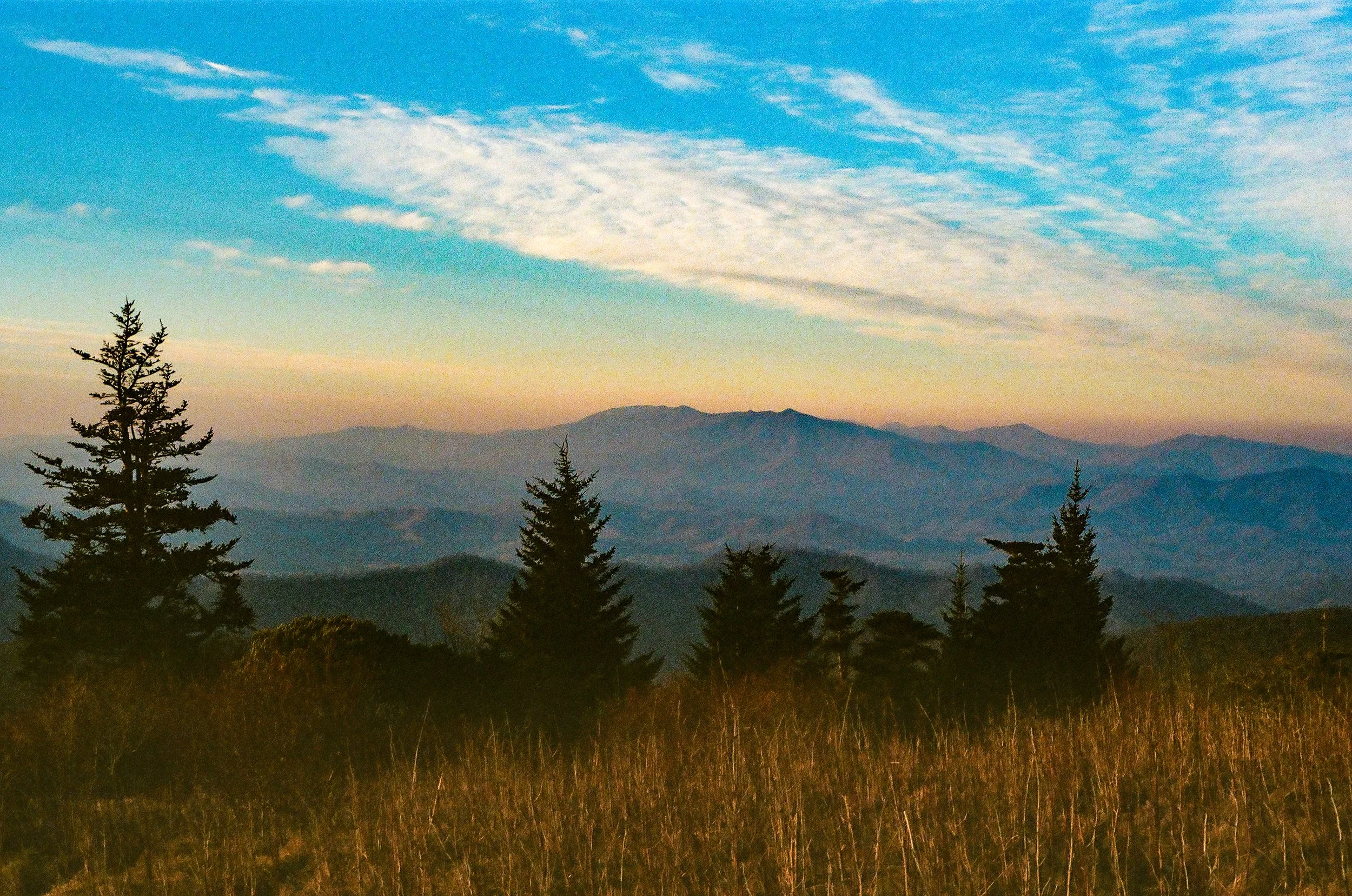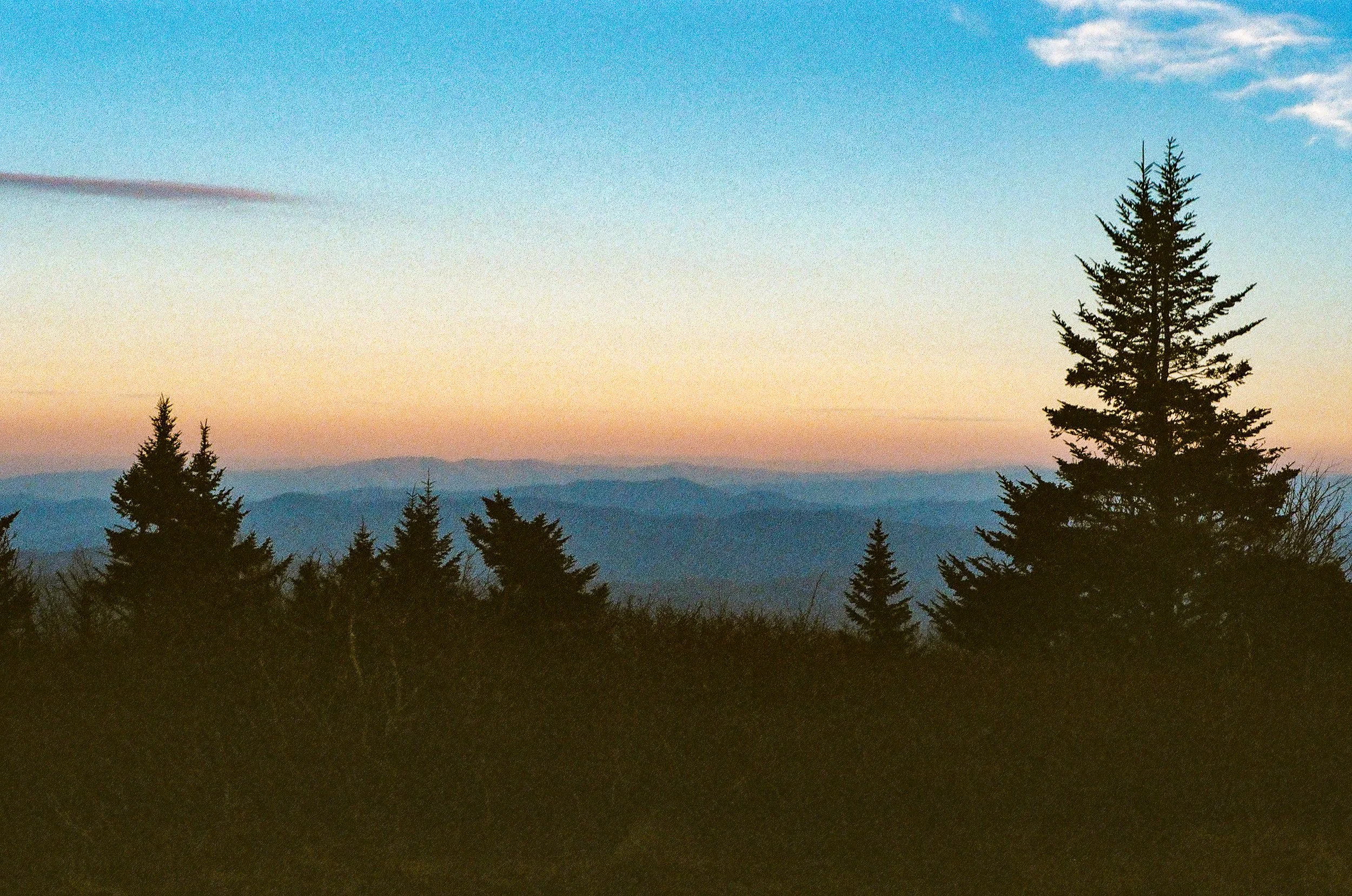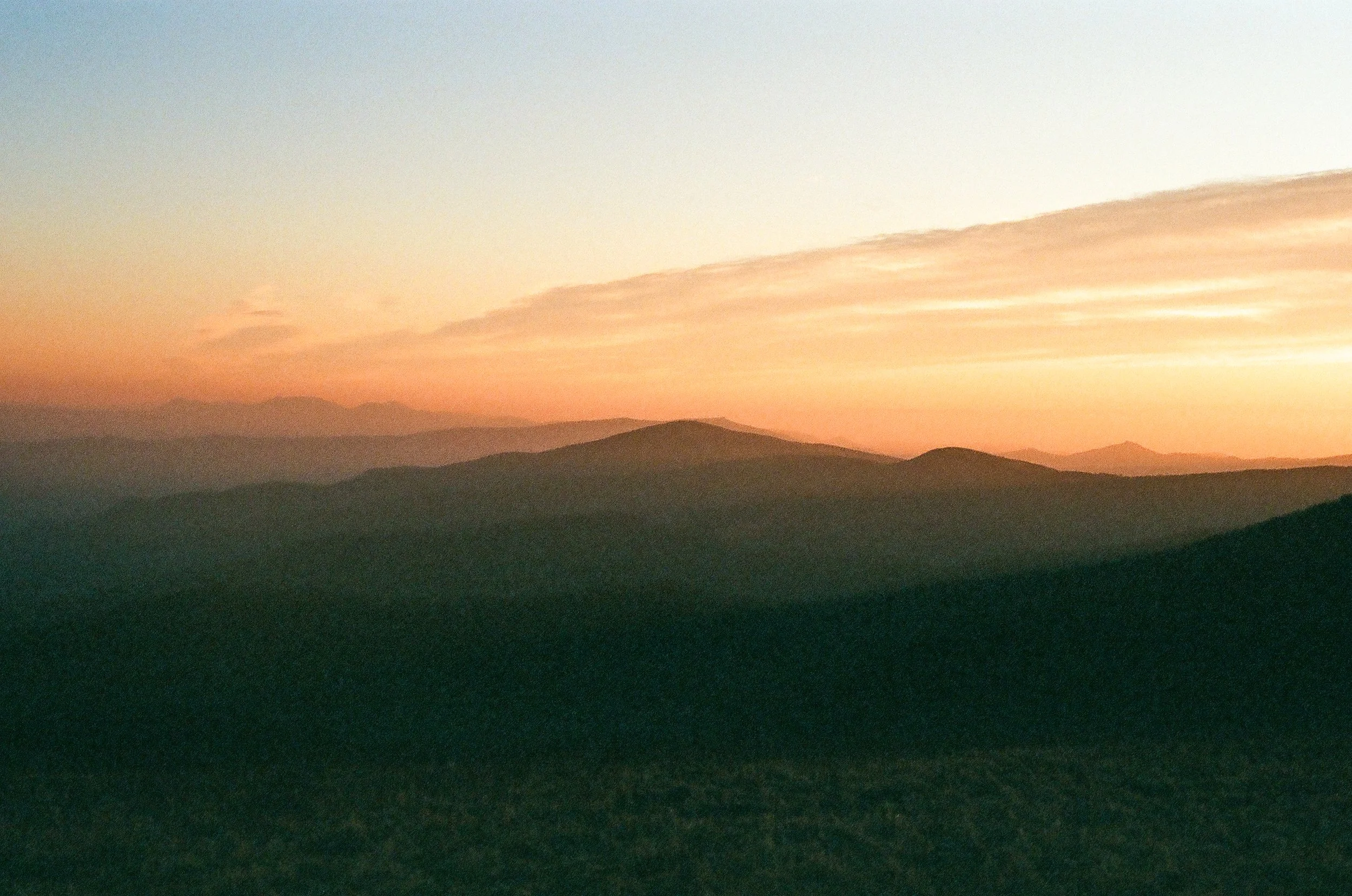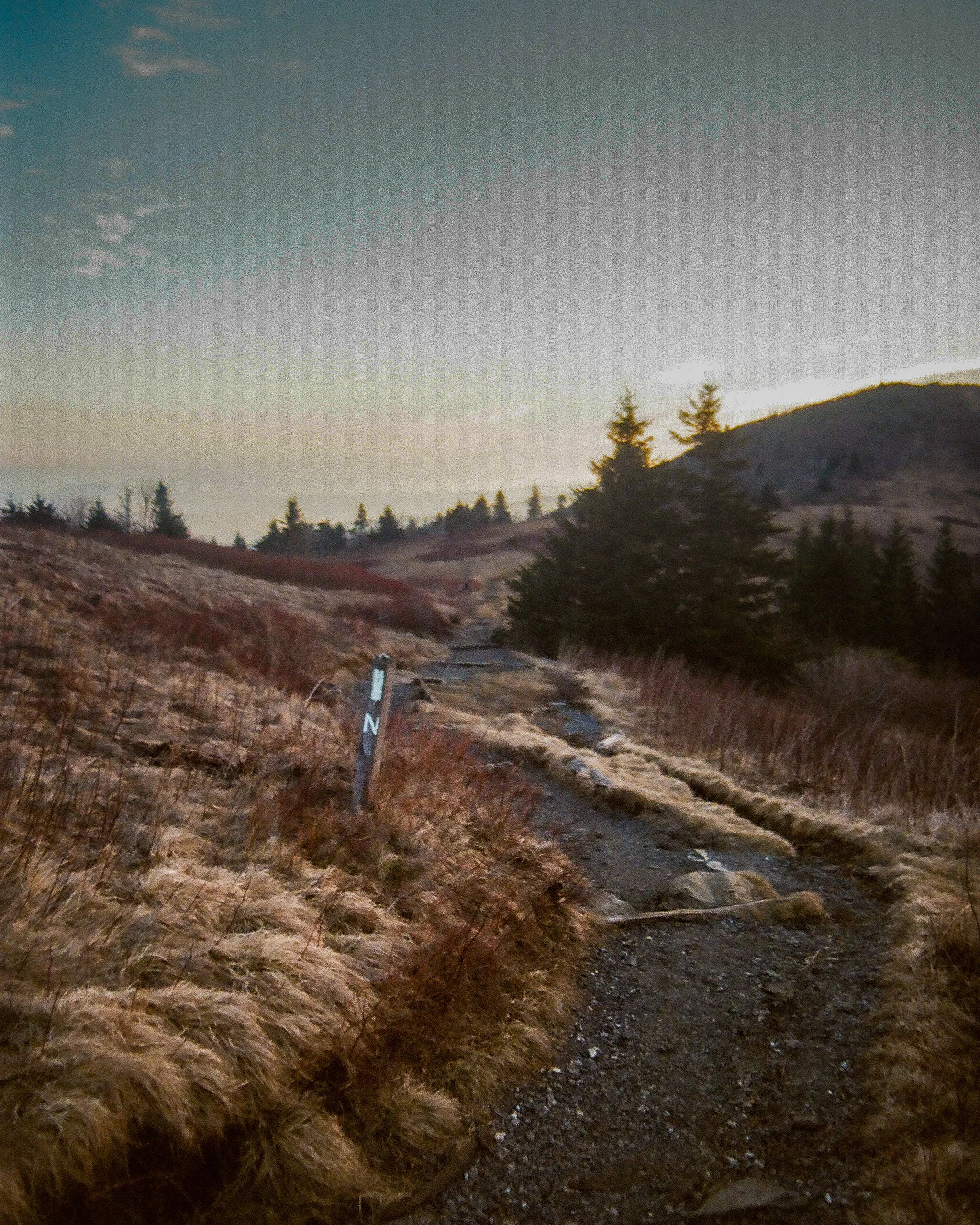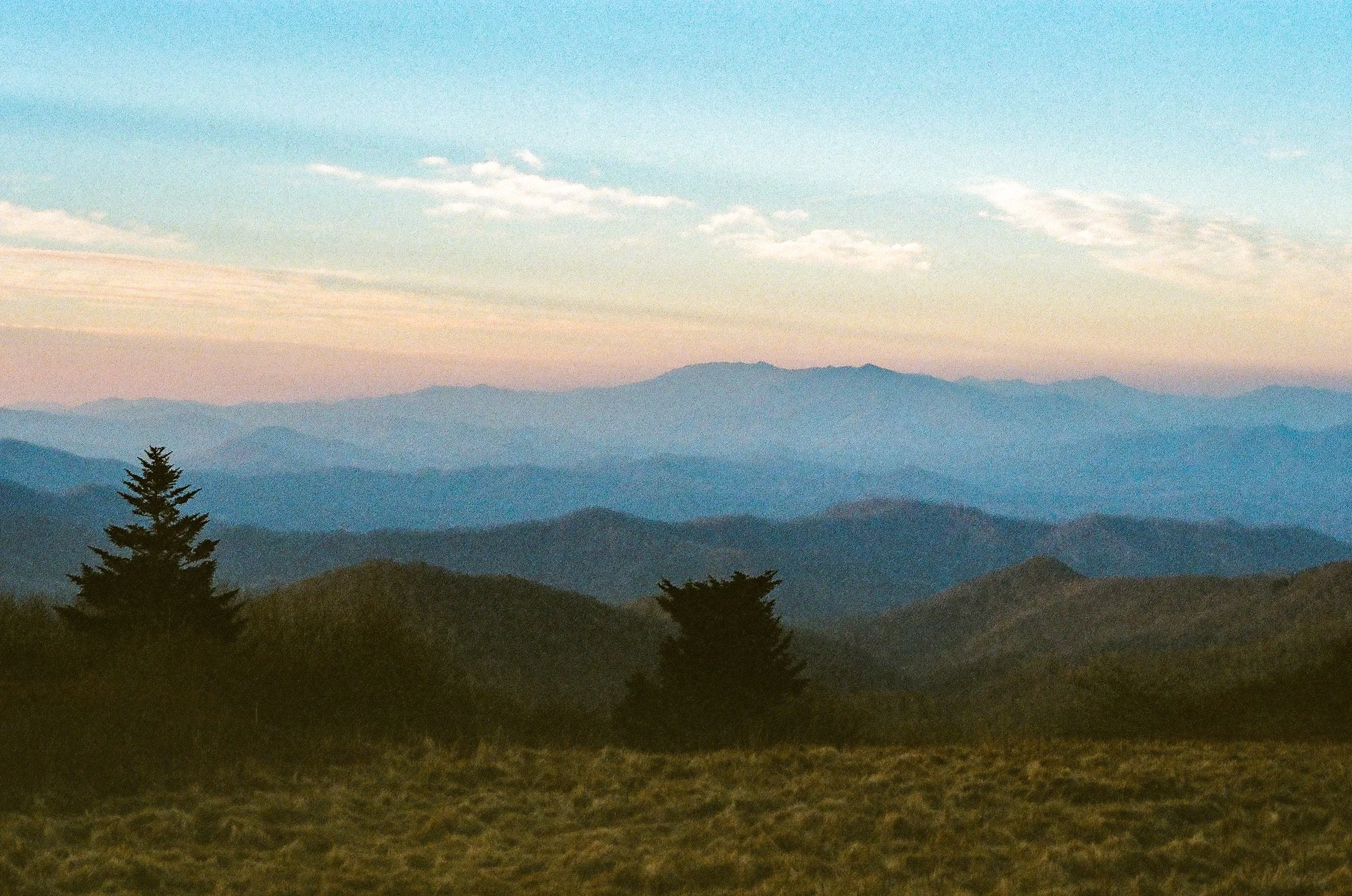The Waning of Winter in the Roan Highlands
View of the Black Mountains from the Appalachian Trail.
The Roan Highlands today may be East Tennessee’s worst kept secret. Increasingly viral, although popular for sunsets and sunrise for many generations before becoming an Instagram favorite, this region is one of the best examples of environments unique to Southern Appalachia. This proved to be a great testing ground for my Pentax ME, loaded with Kodak 400 speed film.
Looking over into East Tennessee.
If this Earth is a canvas, with God as its painter, then on this land he used large decadent brush strokes and took great liberty with his color palate, blending purples, yellows, blues, and oranges into the clouds. It is no surprise why this place has such ardent admirers and frequent visitors.
Looking to the Northeast, toward North Carolina.
Here, rolling bald mountain tops meander into the sky above Carter and Avery counties. Their smoothness is reflected from a long distance, where if even viewed from Johnson City, or other nearby peaks, the Roan Highlands appear as a vast soft mound of Earth with gentle bumps along the spine of the ridge. While unassuming to some, the highest point of the ridge constitutes a 6200 ft elevation above sea level, placing it firmly in the top 10 tallest mountains in the state of Tennessee, and in the top 30 tallest mountains that lie east of the Mississippi River. At such heights, we people who roam these places are blessed with incredible variety of life and a rarity of ecosystem unparallelled in this corner of our vast nation.
The Appalachian Trail.
Officially, there is not a consensus on why these mountains are bald, although it is known that for the incredibly scarce Southern Applachian Spruce forest to grow atop these peaks, there must be a consistent presence of moisture delivered by clouds. Hence, the stands of such forest atop Roan High Knob, giving it its distinctive black cap that is visible from extreme distances.
The Black Mountains, tallest peaks of the Eastern United States.
On this outing, the Highlands did not offer us a view into or above their endemic clouds. Instead, it gave us a filtering of sunlight rising up from across the state of North Carolina, beaming over the piedmont before running so abruptly into the Blue Ridge. This is stunning in its own way, and Kodak film absolutely devoured this warm orange light as it overcame the heights of the landscape. Every time I visit, which is often, this view is different, and one can sit here for hours and watch as the sun and the clouds transform it continuously. It may be my most photographed subject and will likely remain so.
